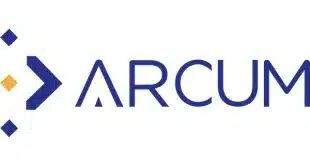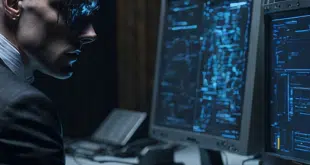An Atlanta test of mobile-phone payments, mobile downloads, and other applications, announced today, is the first major U.S. test of near-field communication (NFC) for functions like contactless payments, but it won't be the last. Mohammad Khan, president and founder of ViVOtech Inc., which is supplying handset-based wallet software and contactless readers for the test, says a series of such pilots, involving expanded functionality and larger numbers of users, will occur over the next 12 months, leading to commercial availability of NFC on mobile phones by Christmas 2006. By then, he says, U.S. handset users will be able to download virtual credit cards, debit cards, and prepaid cards and use them to pay for a variety of goods both over the air and via contactless readers. “The consumer is going to be empowered with this mobile device,” says Khan. Santa Clara, Calif.-based ViVOtech, along with JPMorgan Chase & Co., Cingular Wireless, Nokia, Philips, and Visa USA today launched a pilot at Philips Arena, home of the Atlanta Hawks of the National Basketball Association and the Atlanta Thrashers of the National Hockey Association, involving 250 consumers, 150 point-of-sale contactless readers, and about 60 so-called smart posters, or promotional posters equipped with NFC chips capable of downloading digital content to the 250 handsets, which also contain the chips. The NFC-enabled Nokia 3220 phones are being distributed to season ticketholders who are also Chase Visa account holders and Cingular Wireless subscribers. The phones contain NFC chips from Philips and ViVOtech software that manages the Chase Visa account. For the duration of the pilot, which will end in June at the conclusion of the basketball season, the selected fans will be able to use their phones as contactless credit cards to buy food, drinks, merchandise, and other concessions. They will also be able to download player animations, ring tones, games, wallpaper, and other content from the smart posters. Both the payments and downloads take place by holding the phone within four centimeters of either the reader or the poster. At this range, the NFC chips take over, establishing a link between phone and either reader or poster, and then hand off the transaction to either the embedded wallet software (for payment) or the phone's browser (for the download). Although concessions are being charged to the user's Chase Visa account, charges for content downloads are being billed by Cingular. Player animations are free, with games, ring tones and other such premium content running $2 to $3 each. The Atlanta pilot represents the first use of mobile phones as contactless payment devices in the U.S. since a 2003 project conducted in Dallas by MasterCard International and Nokia, with readers supplied by ViVOtech. Khan says that pilot established the technical practicality of phones as contactless devices, but also exposed an economic issue: handset makers and wireless networks could not justify the cost of contactless chips in phones to support just one function?payment?for just one issuer. And, since the chips were embedded in phone covers distributed by the issuer to its cardholders, banks couldn't afford the technology either, especially with cell phone models changing every six months or so. “We recognized this wasn't scalable,” says Khan. With NFC, though, the economic picture changes. Unlike standard contactless chips, NFC chips allow phones for the first time to be connected at very short range to a wide range of devices and services in the physical world, enabling handsets to perform a broad array of functions including but not limited to payment. The links take place with little or no need of intervention from the user, reducing or eliminating key entry and other clicking and fiddling. “An automated, invisible matching takes place,” says Khan, between NFC-enabled devices. Since NFC has the ability to bridge across different protocols used in different parts of the world, it brings economies of scale, encouraging phone makers to deploy the technology everywhere. Sony, Nokia, and Philips, early advocates of NFC technology, reportedly hope to reduce the cost of NFC chips to under $5, which would make them usable in the cheapest handsets. The ability to download payment accounts?what Khan refers to as “soft cards”?onto phones could transform electronic payment in many markets. Consumers will be able to use their phones to make payments for a huge variety of everyday transactions, including very small ones, or what are known as micropayments. Khan gives as an example a user who uses a credit, debit, or stored-value account to buy a movie ticket over the air, stores it in his phone, and then later goes to the movie theater, where he waves his phone near an NFC-equipped contactless reader at the box office to get in. Payment functions will be password protected, with biometric protection a possibility later on, Khan says. He adds ViVOtech worked closely with the early backers of NFC technology to make sure it would be compatible with the ISO standard the card companies have settled on for contactless payments. Already, contactless technology is gaining momentum, with a number of major banks issuing either cards or fobs equipped with it. ViVOtech, which says it accounts for an 80% market share for readers, has shipped 130,000 of the devices in just 18 months, with about 90% of these shipments going to clients in the U.S.
Check Also
Consumer Information Gains Ground in Criminal Quests, Javelin Report Finds
Ever-clever criminals are expanding their scope in information as well as funds. That’s according to …




